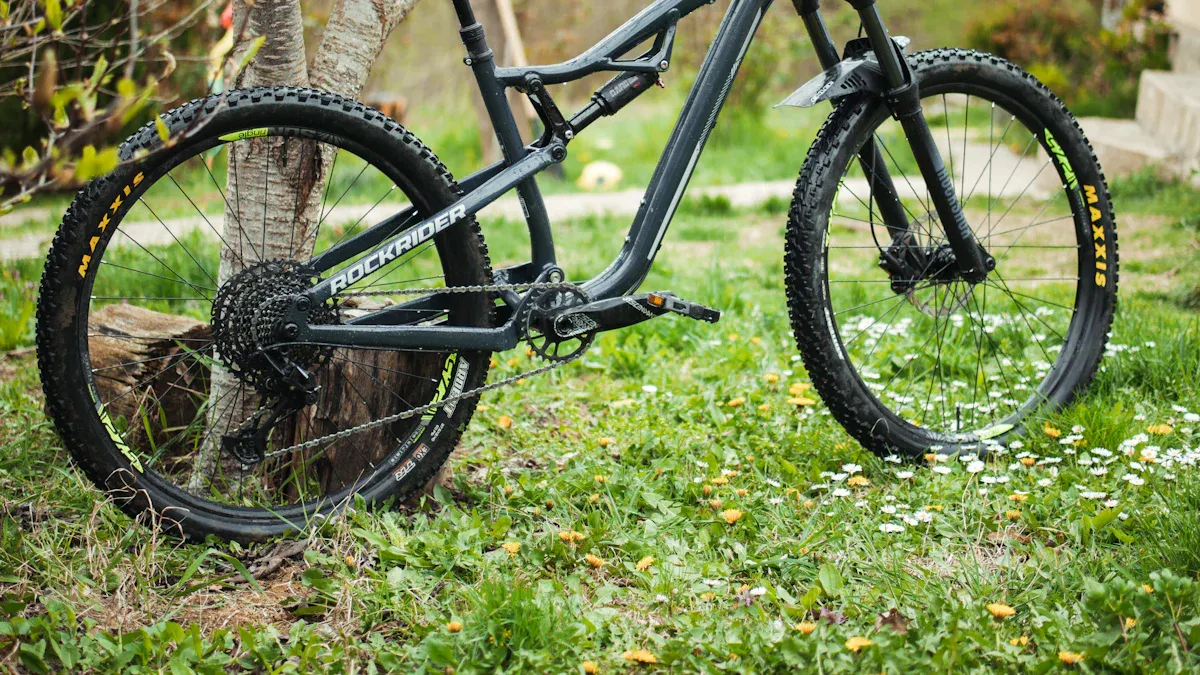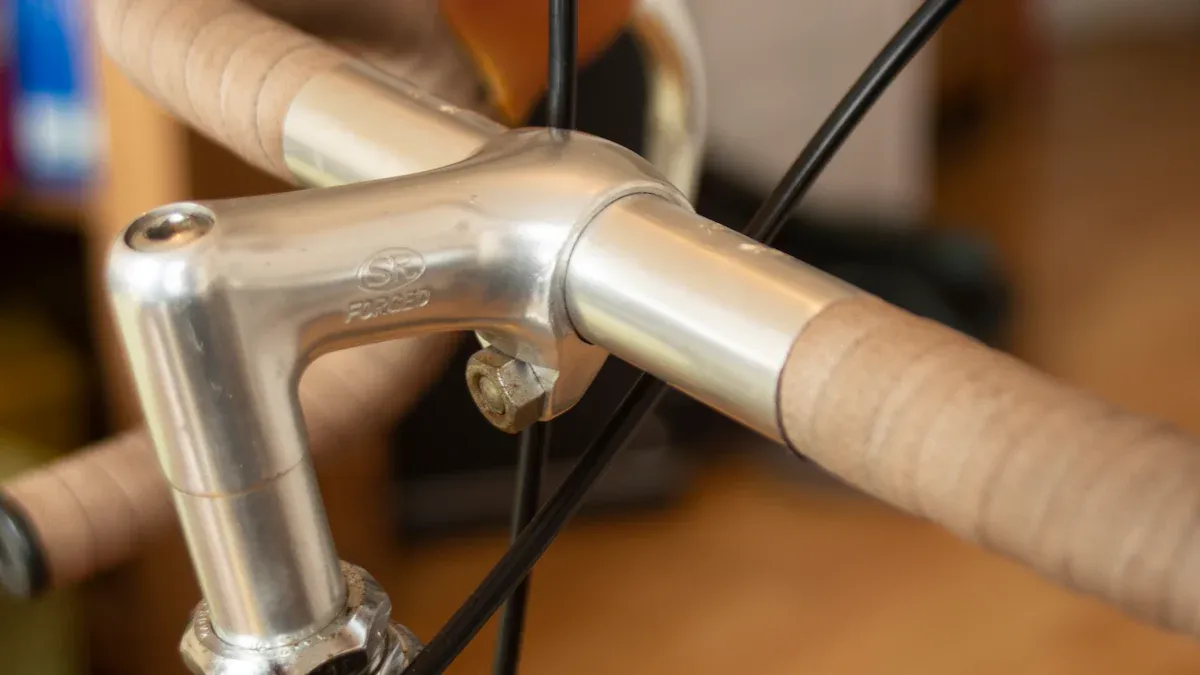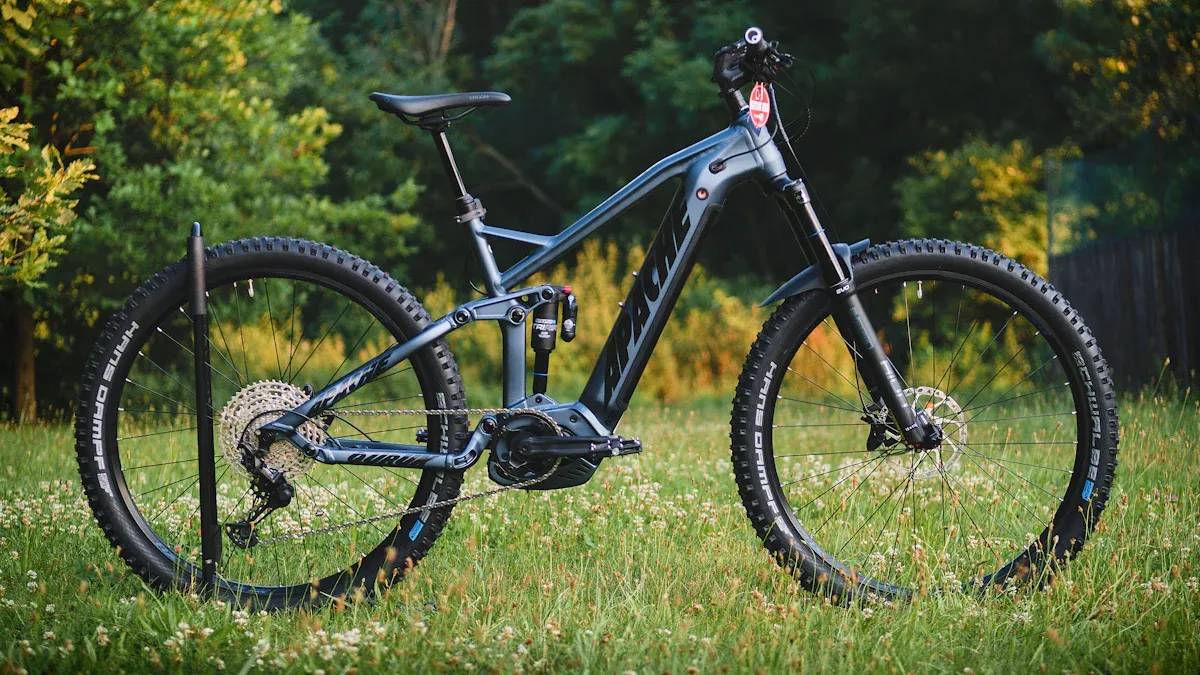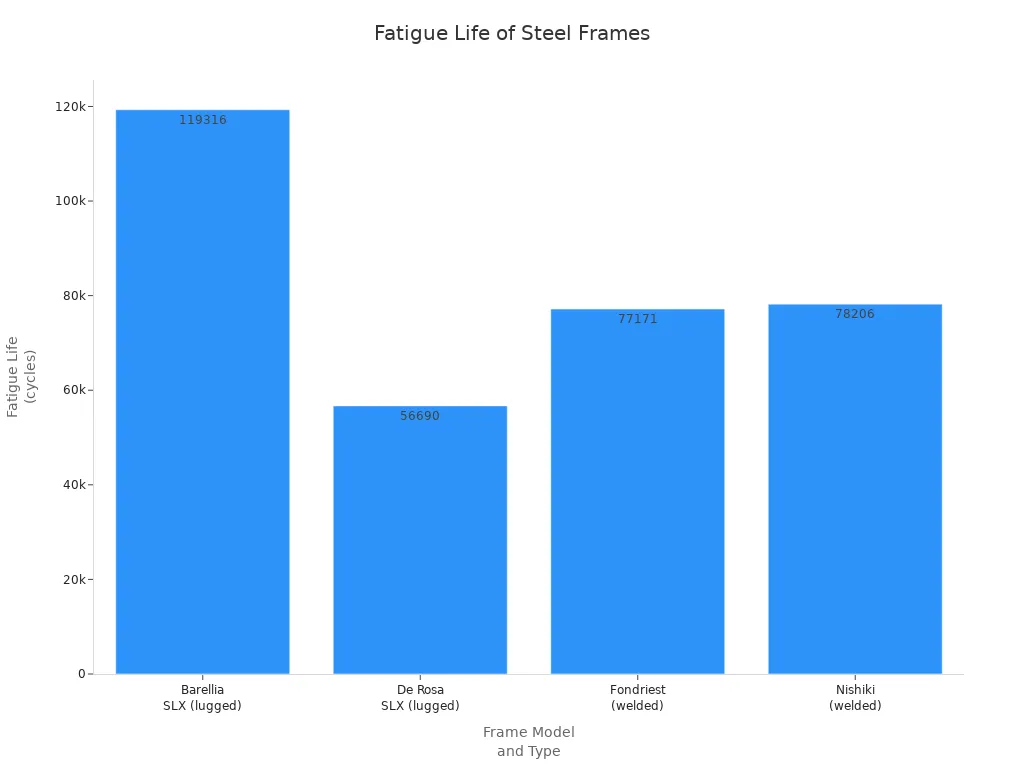
Lugged steel bike frames are not common in mountain bikes now. Welded frames let makers use new tube shapes. They also help build bikes faster and for less money. Many factories in other countries use welding and special tools. They can make thousands of frames for less money.
Making lots of bikes at once helps lower the price.
Factories in Taiwan use new machines to make strong and cheap frames.
These changes help more people get mountain bikes. The bikes also work better on rough trails.
Key Takeaways
Welded frames help bike makers build bikes that are stronger and lighter. They also make bikes more flexible, faster, and cheaper than lugged steel frames. Lugged steel frames were popular a long time ago. They were easy to fix and lasted a long time. But they make bikes heavier and limit design choices. TIG welding lets designers use many tube shapes and angles. This makes modern mountain bikes better for rough trails and different ways of riding. Welded frames use butted tubing and strong joints. This helps balance weight and strength. It also helps bikes handle tough mountain trails. Today, lugged steel frames are still liked by custom builders and some riders. These people like the classic look and easy repairs. But most mountain bikes now use welded frames.
History of Lugged Steel Bike Frame

Early Use in Cycling
Lugged steel bike frames started showing up over 100 years ago. Companies like Reynolds Technology and Columbus Tubi made steel tubes for bikes. At first, builders used cheap carbon steel for the frames. They joined the tubes with thick metal pieces called lugs. Brazing was used instead of welding because it used less heat. This helped keep the steel strong and made fixing bikes easier. Later, builders used better metals like chromoly and manganese-molybdenum. These new metals made bikes lighter and stronger. Lugged frames became popular since they lasted long and were easy to fix.
Note: Brazing with lugs kept the tubes safe from harm while building, which mattered before welding got better.
Mountain Bike Adoption
When mountain bikes were new, builders used lugged steel frames or changed cruiser frames. Riders thought these frames were heavy and hard to ride uphill. People like Shafer made changes by using smaller triangles and sloped top tubes. These ideas made the frames stiffer and work better. Lugged frames were important when mountain biking began. But their design made it hard to try new ideas. Lugs forced builders to use the same tube angles and shapes. As mountain biking got bigger, designers wanted to make new shapes and sizes. TIG welding let them try different designs.
Decline in the 1990s
In the 1990s, many things made lugged frames less popular:
Factories moved to places like Taiwan, which changed how bikes were made and hurt some brands.
Aluminum and carbon fiber frames got popular because they were lighter and looked cool.
People wanted bikes that were not heavy and looked more modern.
Some brands had money problems and new owners.
New steel tubes made for TIG welding helped make lighter frames faster.
TIG welding let designers make many shapes and sizes.
Steel still gave a smooth ride, but most people wanted lighter and newer bikes. The bike world started using welding and new materials, so lugged frames were used less.
Welding vs. Lugged Construction
Manufacturing Efficiency
Welding changed how bike makers build frames. Before, lugged construction let companies hire workers with less skill. Later, lugged frames got harder to make and needed experts. This made building them slow and cost more money. Welded frames, especially with TIG welding, are much quicker to make. Factories use cheaper welding rods instead of expensive lugs. Welded joints need little extra work. Lugged frames need careful fitting and more time to finish the joints.
Welded frames save time and money. Most bike factories use welding now because it needs less work and is faster. This change made mountain bikes cheaper and easier to buy.
A quick comparison:
Feature | Lugged Construction | Welding (TIG) |
|---|---|---|
Labor Intensity | High | Low |
Production Speed | Slow | Fast |
Cost | Expensive | Cheaper |
Skill Required | Very Skilled | Skilled, but less |
Tube Shape Flexibility
Welding lets designers make new shapes. Lugged frames use lugs that only fit certain tube angles and sizes. This limits what builders can do. TIG welding joins tubes at almost any angle. Designers can pick different tube shapes and sizes to make bikes stronger and ride better.
Modern welded frames use butted steel tubing. These tubes are thick at the ends for strength and thin in the middle to save weight. Lugged frames use single-butted tubes and depend on lugs for strength. Welded frames balance strength and weight better.
TIG welding helps designers make creative frames.
Welded frames use new tube shapes for better riding.
Lugged frames limit what builders can choose.
Advances in Welding
Welding has gotten much better since mountain bikes started. TIG welding makes strong, clean joints that last on rough trails. Skilled welders make joints that are strong and light. TIG welding lets builders use thin-wall chromoly steel tubing. This makes frames lighter but still strong.
Some experts say brazed lugged joints can be very strong because the lug adds support. But TIG welding gives more design choices and is strong enough for most bikes. Since the 1990s, TIG welding became the main way to build steel mountain bike frames. New tubing like Logic butted tubing was made for TIG welding. These changes help builders make frames that are lighter, stiffer, and last longer.
In 1988, the first TIG-welded Ritchey Ultra mountain bike showed how well this method worked. After that, TIG welding led to many new frame designs and lighter bikes.
Mountain Bike Design Needs

Strength and Durability
Mountain bikes face tough trails, jumps, and bumps. Their frames must handle big forces, especially where the tubes meet. Builders use special tricks to make frames strong and light. They use butted tubing, which adds extra metal inside the tube ends. This makes the ends strong but keeps the middle light. Some tubes have double or triple butting, so the wall thickness changes along the tube. TIG welding joins the tubes with strong, even welds. Good welds wrap all the way around the tube and use the same material as the tubes. After welding, heat treatment helps the metal stay strong. These steps help frames last longer and keep riders safe.
Mountain bike frames need to be strong at tube ends.
Butted tubing adds strength without extra weight.
TIG welding creates solid joints for better durability.
Heat treatment after welding restores metal strength.
Combining butted tubes and good welding makes frames tough for rough rides.
Geometry and Tube Profiles
Frame geometry shapes how a bike feels and handles. Welded frames let designers use many tube angles and shapes. They can make sloped top tubes, short rear triangles, or curved tubes. This freedom helps builders create bikes for climbing, jumping, or fast turns. Welded steel frames use butted tubes, which can be thick or thin in different spots. This helps balance weight and strength. Lugged frames limit these choices because lugs only fit certain angles. Welded frames give more options for modern mountain bike designs.
Frame Type | Tube Shape Options | Geometry Flexibility |
|---|---|---|
Lugged | Limited | Limited |
Welded (TIG) | Many | High |
Performance Demands
Modern mountain bikes must work on dirt, gravel, and rocky trails. Riders want bikes that can handle many types of rides. Welded frames help meet these needs. They allow for mounts for racks, fenders, and water bottles. Welded steel frames also fit different wheel sizes and handlebars. TIG-welded, triple-butted tubing gives strength and durability for adventure rides. These features make welded frames a top choice for riders who want tough and flexible bikes.

Lugged Steel Bike Frame Today
Repairability
Many riders like lugged steel frames because they are easy to fix. Brazing lets a skilled mechanic heat the joints and take out broken tubes. This uses less heat than welding, so the steel stays safe. The lugs act like sockets and help make repairs simple. Welded frames need more heat to fix. This can hurt the tubes and make repairs harder. Touring cyclists pick lugged frames since they can get them fixed almost anywhere. Steel frames still ride smooth and strong after repairs.
Niche Appeal
Lugged frames are popular with custom builders and bike fans. Many things make these frames special:
Riders like the skill and history of lugged frames.
Builders can make bikes with cool features, like custom dropouts or cable paths.
Custom frames can fit the rider’s body and style.
Each frame shows the builder’s skill and feels unique.
High labor costs and few skilled builders mean not many are made, so they are rare.
Custom builders use chromoly steel because it is stiff, bends a little, and lasts long. This helps riders feel less tired and makes rough trails smoother. Riders also like that they can fix these frames while riding far from home.
Aesthetics
Lugged frames look classic and have fancy joints. Many cyclists think these frames are art. The lugs and smooth joints give bikes a style that lasts. This look can make lugged frames worth more when sold. Riders who care about looks often choose lugged steel, even if it costs extra. Picking between lugged and welded frames is about what looks best and how much you value good work.
New materials and ways to build bikes changed mountain bike design. Makers stopped using lugged steel frames. Lighter materials like aluminum and carbon fiber made bikes stronger. These materials also let designers try new shapes.
Some riders still like custom frames for their classic style. Custom builders make frames with special features and comfort that lasts. Riders pick these frames because they are easy to fix and feel good on bumpy trails.
FAQ
Why do most mountain bikes use welded frames instead of lugged frames?
Welded frames let designers pick many tube shapes. Factories can make welded frames quickly and for less money. Welded joints also work better on bumpy trails than lugged joints.
Can riders repair lugged steel frames more easily than welded frames?
Yes. Mechanics can heat up and take out broken tubes from lugged frames. Welded frames need more heat, which can make the metal weaker. Many touring cyclists pick lugged frames because they are easier to fix.
Do lugged steel frames weigh more than welded frames?
Lugged steel frames are usually heavier. Lugs add more metal at the joints. Welded frames use butted tubing and thin walls to help save weight.
Are lugged steel frames still made today?
Custom builders still make lugged steel frames. These frames are liked by riders who want a classic look and easy repairs. Most big bike companies use welded frames for mountain bikes.
See Also
The Evolution Of Single Gear Bike Frames From Iron To Carbon
Factors That Determine Steel Mountain Bike Frames Pros And Cons
Key Differences Between Fat Bike And Mountain Bike Frames Explained
A Buyer’s Guide To Carbon Aluminum And Steel Bike Frames
Understanding The Science Of Compliance In Mountain Bike Frames

I appreciate, cause I found just what I was looking for. You have ended my 4 day long hunt! God Bless you man. Have a great day. Bye